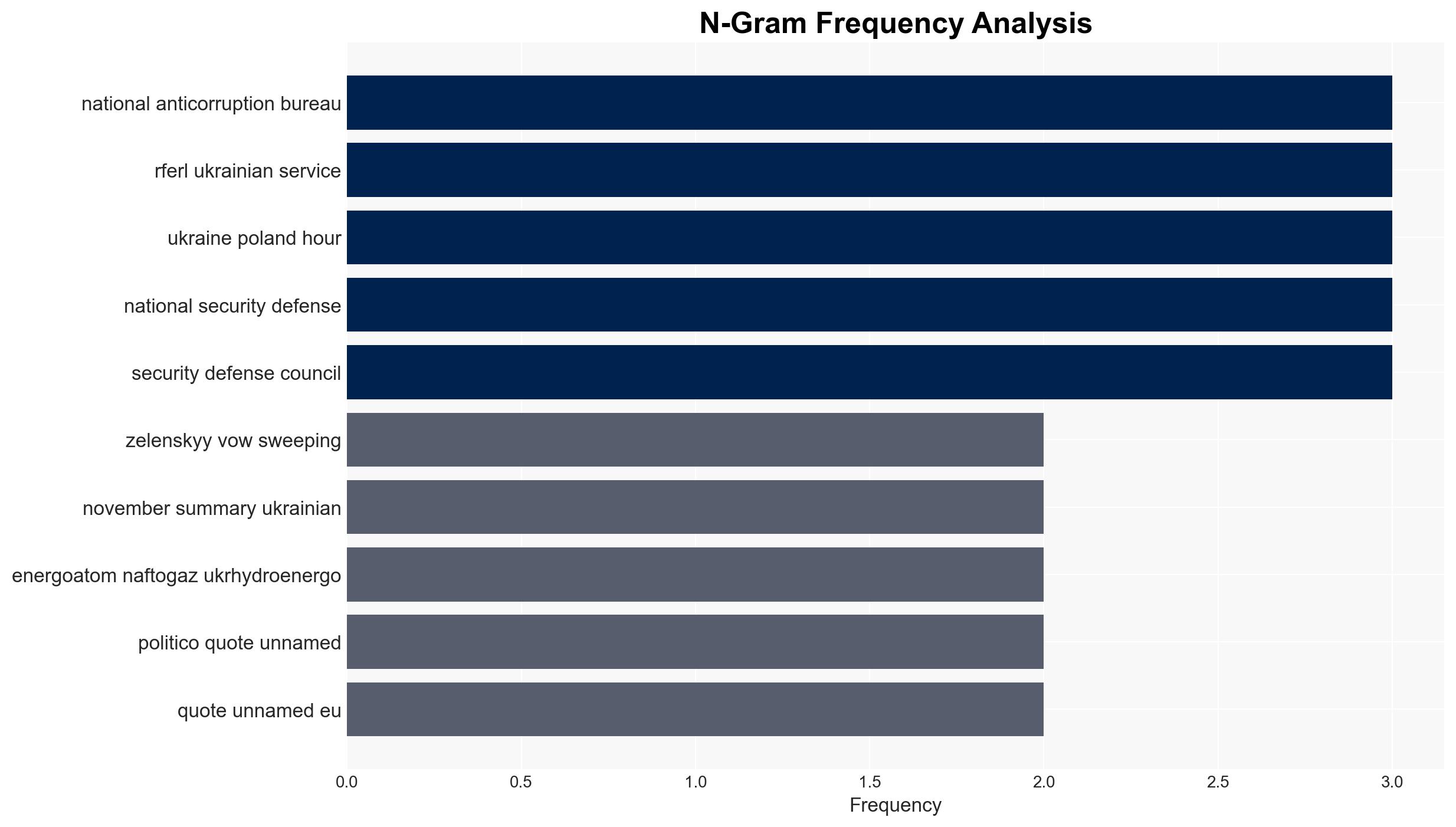Zelenskyy Vows Sweeping Energy Sector Overhaul Amid Corruption Scandal – Globalsecurity.org
Published on: 2025-11-16
AI-powered OSINT brief from verified open sources. Automated NLP signal extraction with human verification. See our Methodology and Why WorldWideWatchers.
Intelligence Report: Strategic Analysis of Ukraine’s Energy Sector Overhaul
1. BLUF (Bottom Line Up Front)
With a moderate confidence level, the most supported hypothesis is that President Zelenskyy’s energy sector overhaul is primarily a strategic move to regain trust from Western allies and mitigate domestic unrest due to corruption scandals. Recommended actions include monitoring the implementation of reforms and evaluating the effectiveness of new leadership in state-owned enterprises.
2. Competing Hypotheses
Hypothesis 1: Zelenskyy’s overhaul of the energy sector is a genuine effort to combat corruption and improve governance, driven by internal and external pressures.
Hypothesis 2: The overhaul is primarily a political maneuver to placate Western allies and domestic critics, with limited genuine intent to address systemic corruption.
Hypothesis 1 is more likely due to the significant international and domestic pressures on Ukraine to demonstrate tangible anti-corruption efforts, especially amidst ongoing conflict with Russia. However, the presence of close associates in implicated scandals suggests elements of Hypothesis 2.
3. Key Assumptions and Red Flags
Assumptions: It is assumed that the Ukrainian government has the capacity and political will to implement effective reforms in the energy sector.
Red Flags: The involvement of close associates of Zelenskyy, such as Timur Mindich, in corruption allegations raises concerns about the depth of the reform commitment. Mindich’s reported escape to Poland suggests potential forewarning or complicity within the government.
4. Implications and Strategic Risks
The overhaul could lead to political instability if reforms are perceived as insufficient or if key figures are protected from accountability. Economically, failure to reform could deter foreign investment and aid. Cyber and informational threats may arise from actors seeking to exploit perceived weaknesses or discredit the reform process.
5. Recommendations and Outlook
- Monitor the selection process for new leadership in state-owned enterprises to ensure transparency and meritocracy.
- Engage with international partners to secure technical and financial support for reform implementation.
- Best Scenario: Successful reforms lead to increased foreign investment and strengthened international alliances.
- Worst Scenario: Superficial reforms result in continued corruption, loss of Western support, and increased domestic unrest.
- Most-likely Scenario: Partial reforms are implemented, leading to moderate improvements but ongoing challenges in eradicating systemic corruption.
6. Key Individuals and Entities
Volodymyr Zelenskyy: Ukrainian President leading the reform initiative.
Timur Mindich: Business partner implicated in corruption, fled to Poland.
Energoatom, Naftogaz, Ukrhydroenergo: Key state-owned enterprises targeted for leadership overhaul.
7. Thematic Tags
Structured Analytic Techniques Applied
- Cognitive Bias Stress Test: Expose and correct potential biases in assessments through red-teaming and structured challenge.
- Bayesian Scenario Modeling: Use probabilistic forecasting for conflict trajectories or escalation likelihood.
- Network Influence Mapping: Map relationships between state and non-state actors for impact estimation.
- Narrative Pattern Analysis: Deconstruct and track propaganda or influence narratives.
Explore more:
National Security Threats Briefs ·
Daily Summary ·
Support us
·





